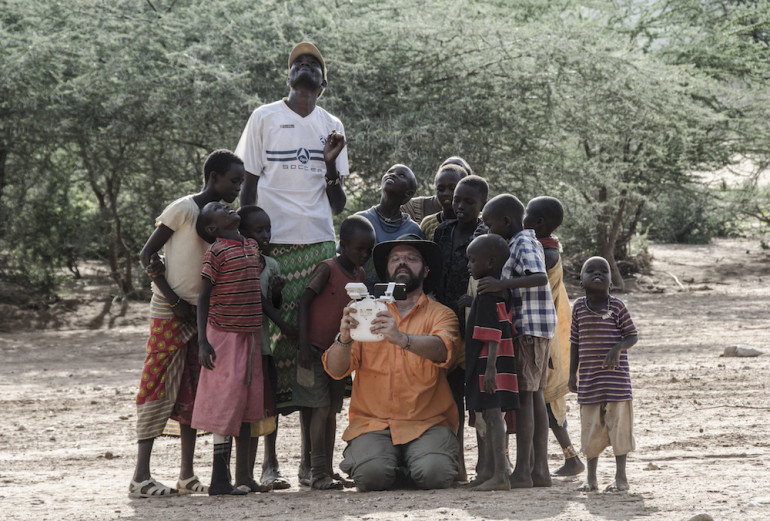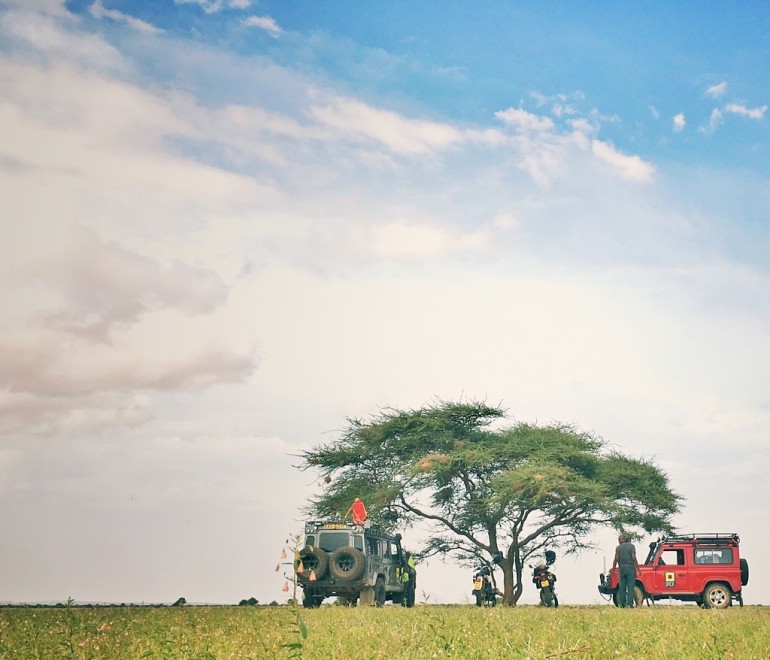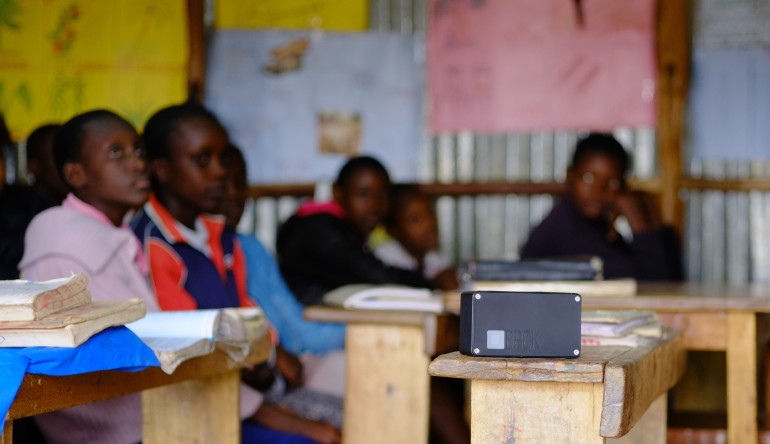Designing at the edge of the grid
A year ago, I coined a phrase that grounded my passion for human centered design and is the reason I wake up every morning. “Africa cannot afford un-contextualized design, the stakes are simply too high” never is this so true than in education.
One of the reasons I joined and love BRCK is because BRCK dares to go where others won’t. This week we’re in northern Kenya, a remote place with many challenges. Many don’t go to these extreme environments because of the geographical, social and economic constraints. However, we at BRCK hold a different point of view, that they matter and it makes both social and economic sense to design for the real Africa.
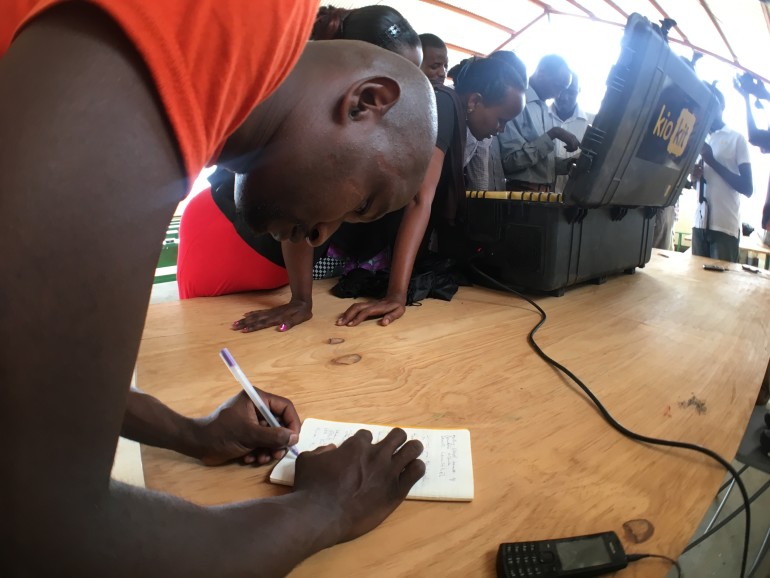
Mark Kamau taking quick notes as the teachers learn the Kio Kit
Tirrim Primary School is a good example. It is school in the desert, a long way up from Isiolo town, and has been the top primary school in testing in Marsabit County since 2008 sending their graduates to the most prestigious schools in the country. It is a charity school paid for by missionaries and has 620 pupils. Their dream, according to one of the teachers, is to become the “RVA (Erik’s former school) of the desert.” It is a lofty and worthy goal, especially considering people of Korr think on themselves as ‘Kenya B’ because of the sense of isolation and neglect of this desert folk feel from the rest of the country. Despite their limited access, these kids are expected to sit the same national exam and pitted against the same yardstick tablet wielding, smartphone trending students in Nairobi.
As a human centered designer with a passion for Africa, this is amazing territory. The Kio Kit sets out to answer a fundamental design question. ‘How can we convert any rural classroom into a digital classroom?’
In tackling this difficult challenge we made some assumption and learnt some lessons these are specific to this expedition.
1. CONTEXTUALIZED GUIDES
We set out to create guides for using the Kio Kit is English as it is the national language upon which all examinations are taken, but the role of local language in education, even when explaining technology is simply too effective to ignore. Today I observed a nuanced but interesting example. One teacher was trying to explain to a class of lower primary kids what the back button was on the tablet using conventional English and it took him a while to get them on board. Another said please click the “Khonjor” and all the students understood it immediately.
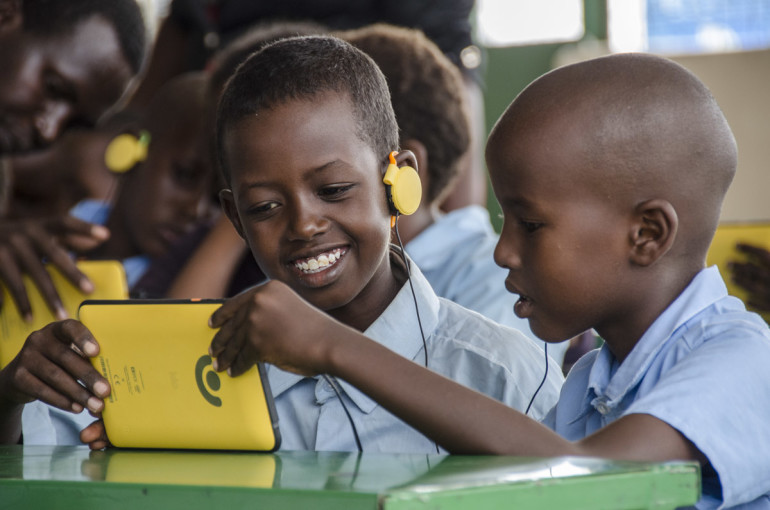
Some Rendille children on the Kio tablets
In the Rendille language Khonjor is a sickle, one the kids grow seeing their parents use for cutting plants. This shape allowed them to understand the reference as the blade points “back”. I also observed that even a few miles apart, the nuanced pronunciation of the same word meant the difference in understanding of things. While it is means more work, we have to contextualize the Kio Kit guides in localized videos.
2. COLLABORATIVE EXPERIENCES
With tablets, the idea is that students each get a tablet and are able to access content individually. In this construct, it is easy to diminish the importance of collaborative learning. The younger students are, the more they learn from observing and collaborating with each other. The content and games on the Kio Kit that we tested emphasized the need to have even more experiences in the Kio Kit that take advantage of this collaboration.
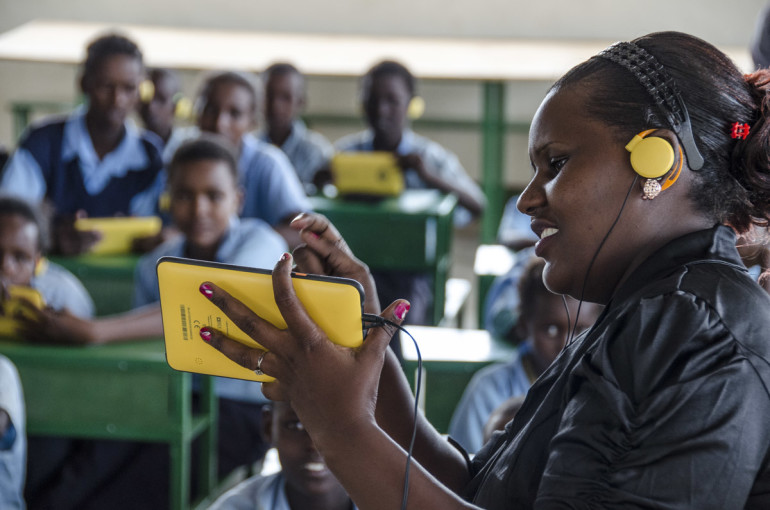
A teacher with the Kio tablet
2. AUTHORITY CHALLENGE
The typical construct of a normal Kenyan school is that the teacher has the authority, they dictate what happens in the classroom and assume leadership, responsibility and authority. The tablet presents a different paradigm because with the tablet in their hands, the students have more responsibility than listening and writing. They play a more active role in their own learning. Handling this shift is challenging to teachers and their usual classroom control skills don’t directly apply. We therefore need to invest more time on classroom management training with technology.
There are many more lessons we have learnt from technical centered challenges to human centered challenges that energize us as we ride back home to make the Kio Kit work even better. Most of all, interacting with people motivates us to want to do even better.
